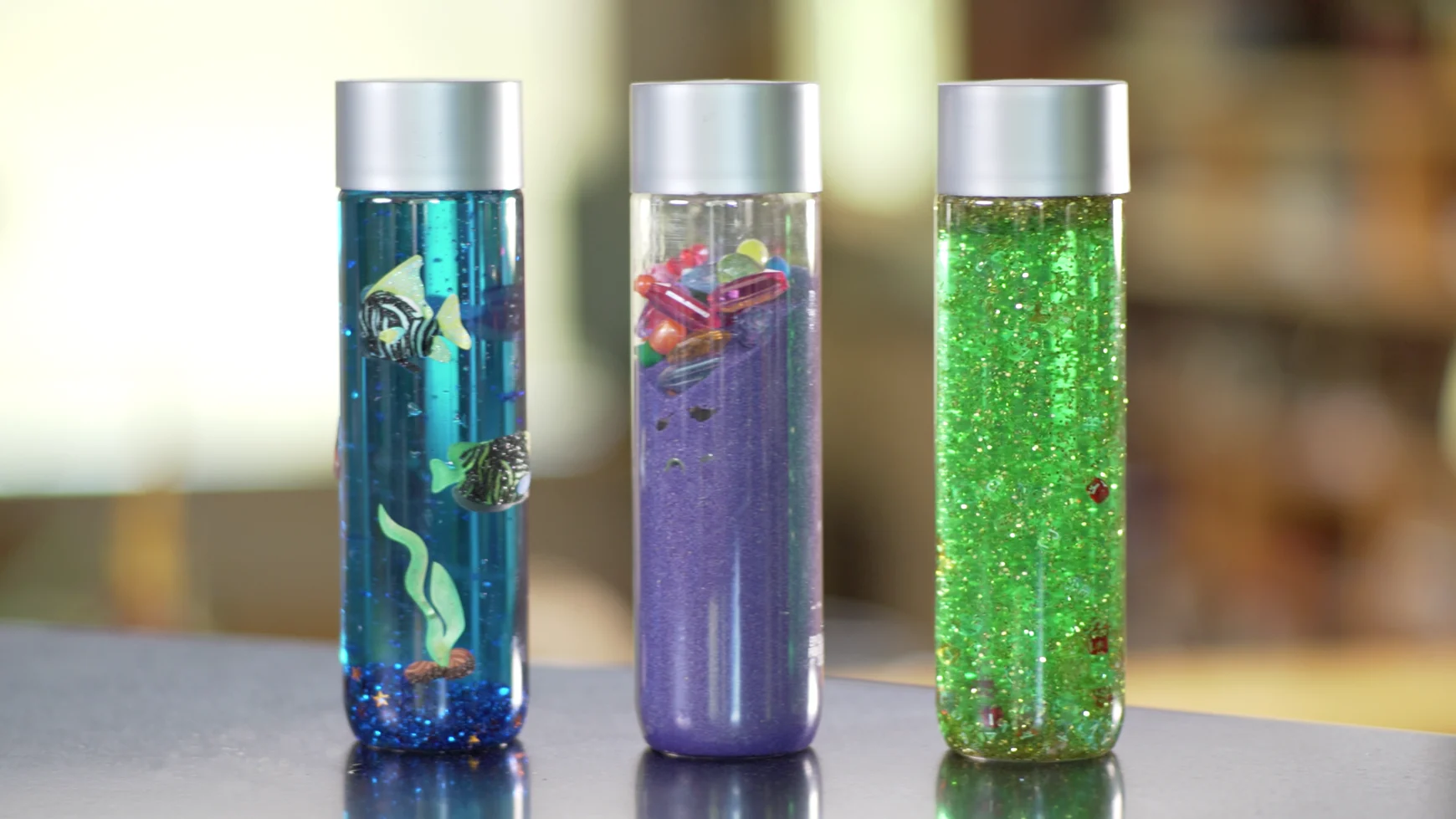How to make a sensory travel kit for your child
A sensory travel kit has tools to calm a child who’s overwhelmed. Learn how to make three different types of kits. Watch a video and print a checklist to get started.
Has your child ever had a sensory meltdown in a store or an airport? Do you worry about managing sensory overload while you’re at a school concert or visiting friends or relatives?
Even if you’ve found tools and strategies that help your child, sensory overload can be harder to manage when you’re on the go. This is when a sensory travel kit can help.
Watch: How to make sensory travel kits
Watch this video to learn how to make three different types of sensory travel kits. You don’t need every item in each kit. Choose the items that will help with your child’s particular sensory challenges.
Read: Directions for making three different kits
1. Sensory travel kit for quick trips
When you go to the store or to a school event, you’ll only be gone for a short time. It may help to have a small sensory regulation kit in your coat pocket or purse.
A roll-up makeup bag can often hold what you need. It has sections to organize the items. And it’s compact enough to tuck away.
Here are some things you can put in it:
Earbuds, folding headphones, or earplugs to help make noise less overwhelming
Sticky notes to put over sensors for automatic flushing toilets and hand dryers
A small bottle of hand lotion to soothe your child’s need for touch
“Smellies” (like scented lip balm)
A small fidget or stress ball
Oral sensory tools like gum, Chewelry, or chewy and crunchy snacks
2. Sensory box for the car
Many parents and caregivers spend a lot of time driving kids to and from places. You can keep a larger and better-stocked sensory kit in the car.
A tackle box or a craft box with sections and a handle can be a good choice. It’s easy for you and your child to sort through. You can include the same items you’d put in the quick-trip travel kit. And you can also add bigger things that don’t fit in a makeup bag.
These items might be:
Noise-reducing headphones to reduce traffic noise
Sunglasses, a wide-brimmed hat, and/or car window shades to reduce light
A timer to help with transitions
A small weighted lap pad, stuffed animal, or sensory pillow to provide calming pressure
Play-dough or clay
A jump rope (to use at rest stops or at your destination)
Bubbles
A harmonica, kazoo, or other small instruments
Books
3. Sensory backpack for vacations
Traveling to new locations or visiting family can be exciting. It can also be stressful for kids who seek or avoid sensory stimulation. It might help to keep a sensory backpack within reach in the car or on a bus, plane, or train.
You can also pack things in the backpack that will be useful while you’re away. These might be items your child uses as part of a daily sensory diet. You could also pack:
Familiar toiletries, like shampoo, soap, and toothpaste (so your child can have the usual smells and tastes)
A washcloth and towel with a texture you know your child will tolerate
A change of clothes
Coloring books with scented markers, a travel-size Etch A Sketch, or a squishy or textured handheld ball
A weighted vest or weighted blanket to provide calming pressure (if your child has an occupational therapist, check with them first)
Your child’s favorite music on a mobile device
Gummy or crunchy snacks (like fruit snacks or pretzels)
Straws or a water bottle with a straw/spout
Download: Use a sensory travel kit checklist
It can help to use a checklist when making your kit. Download and print this checklist of suggested sensory items. Remember, you don’t need every item listed. Choose the best ones for your child.
How to make a sensory travel kit for your childPDF - 187.0 KB
More resources
A sensory travel kit is just one way to help your child handle sensory overload.
Find out about other strategies you can try.
Learn ways to manage meltdowns and tame tantrums.
Get tips to help kids avoid sensory overload on trips.






